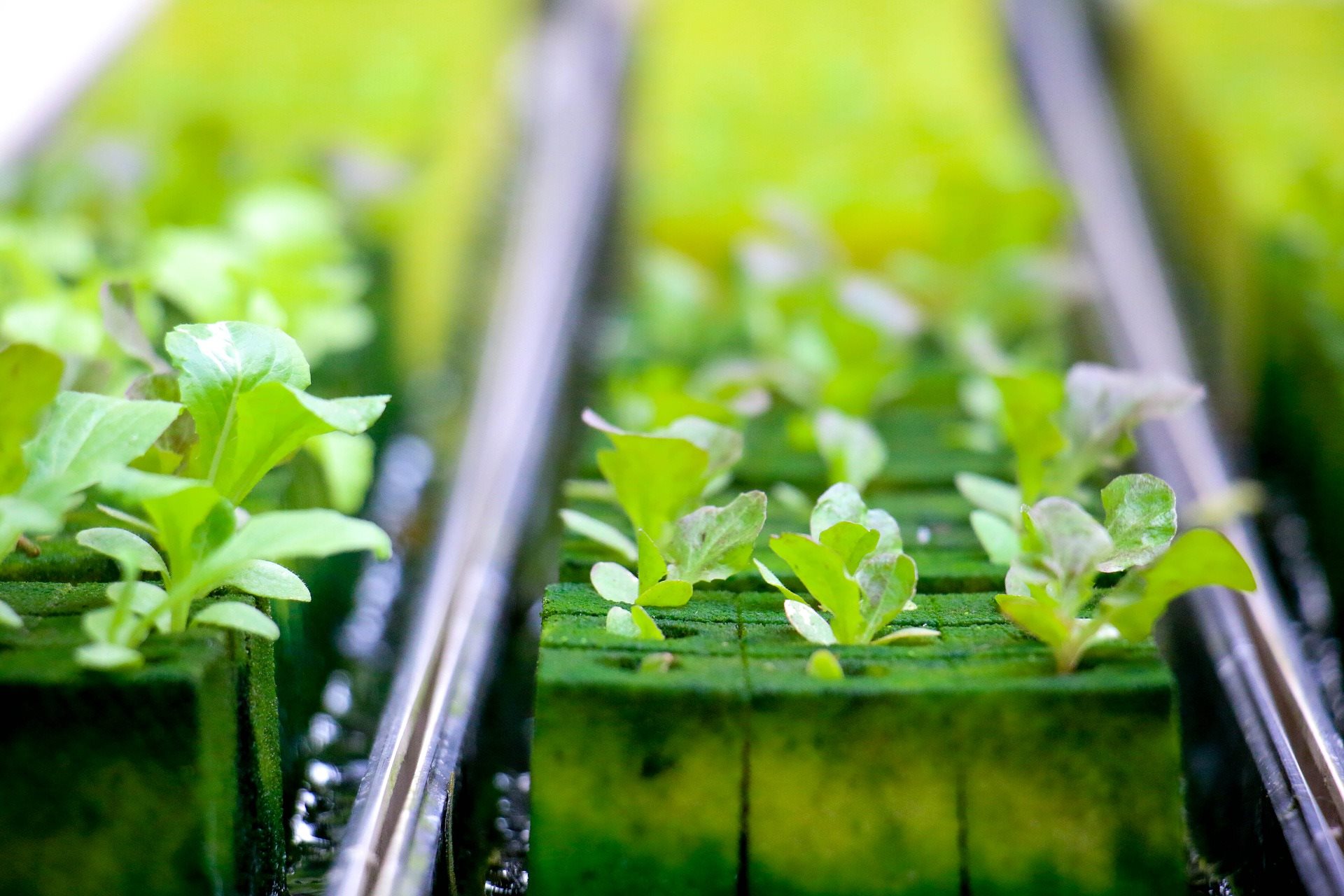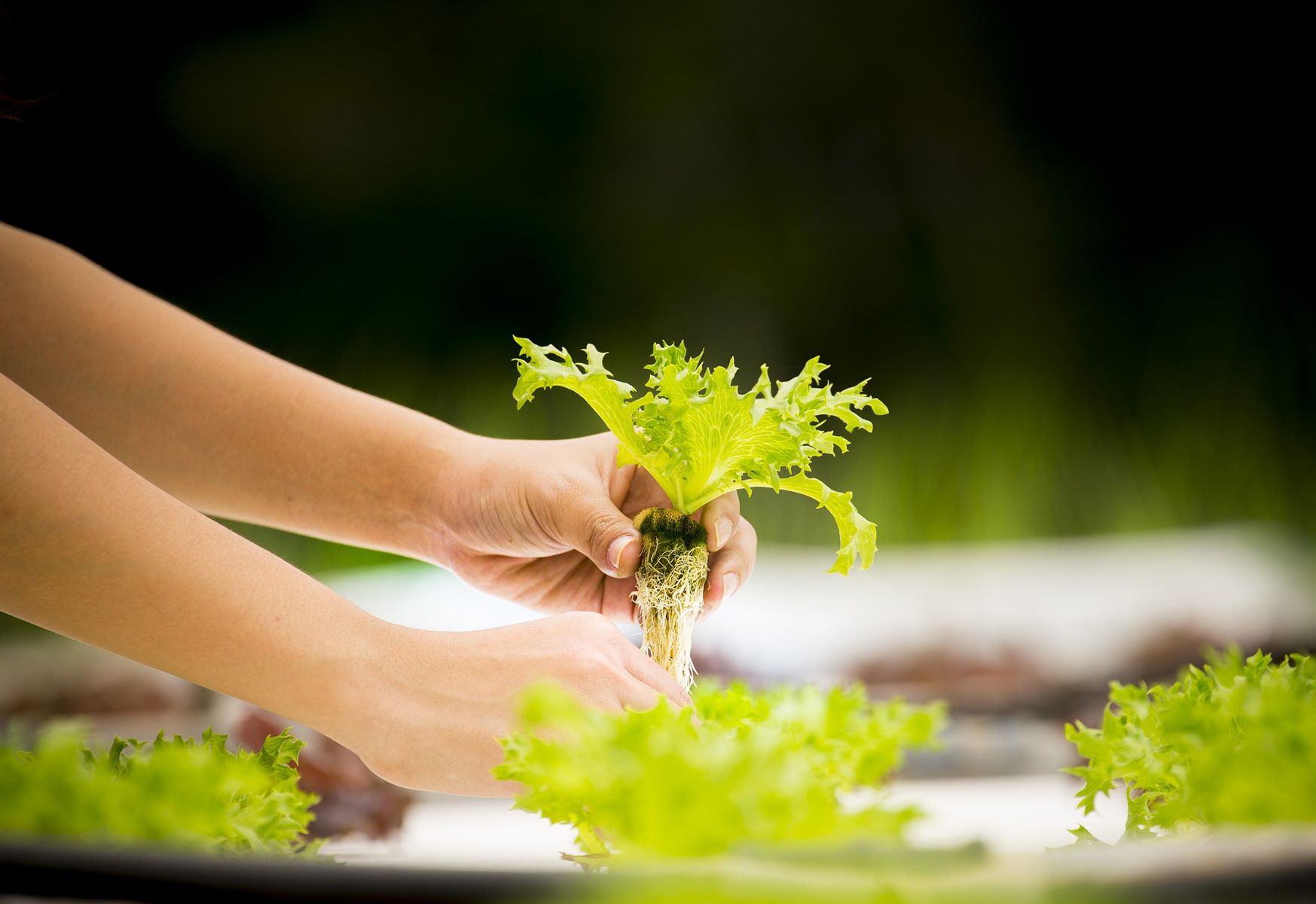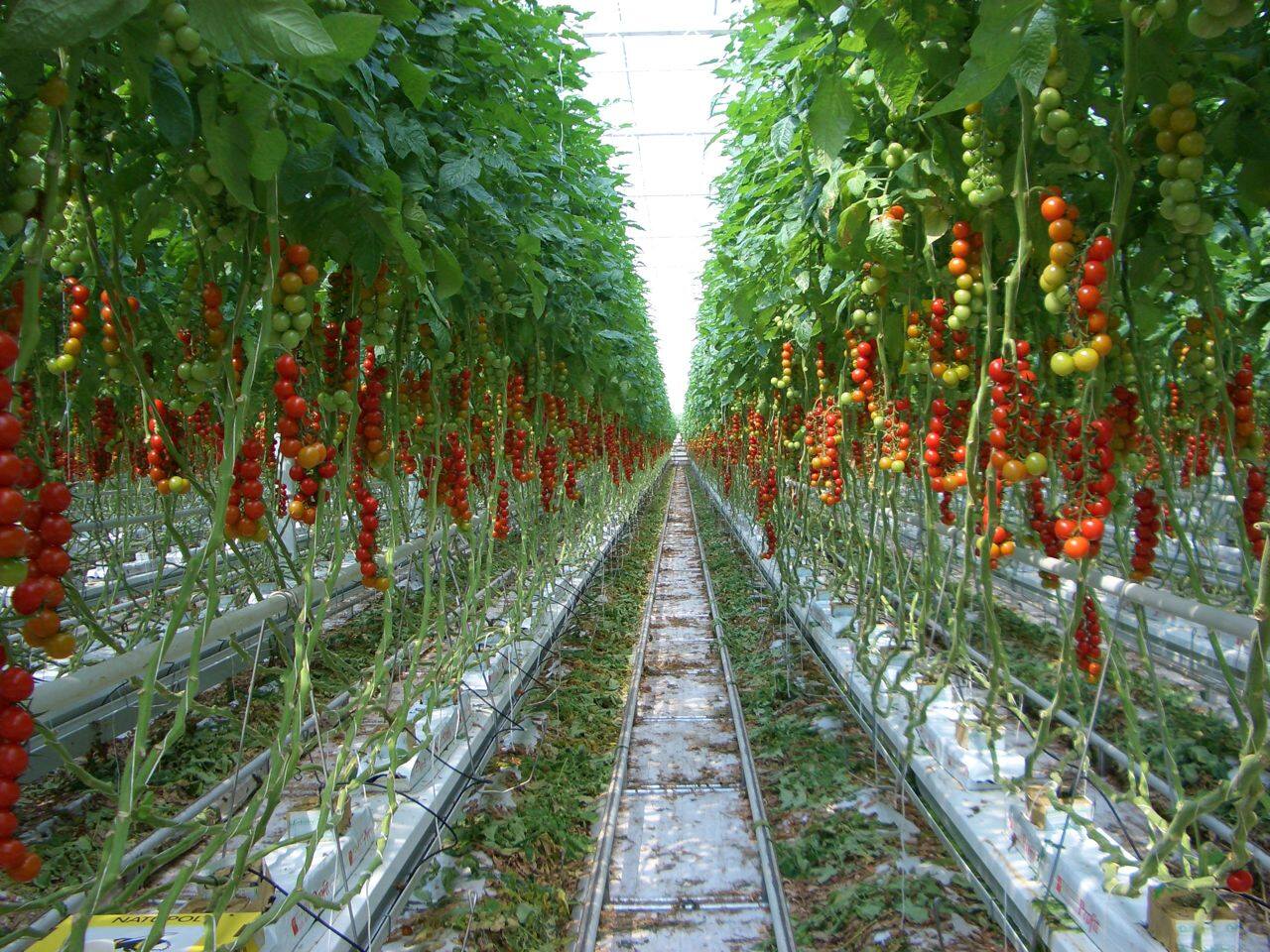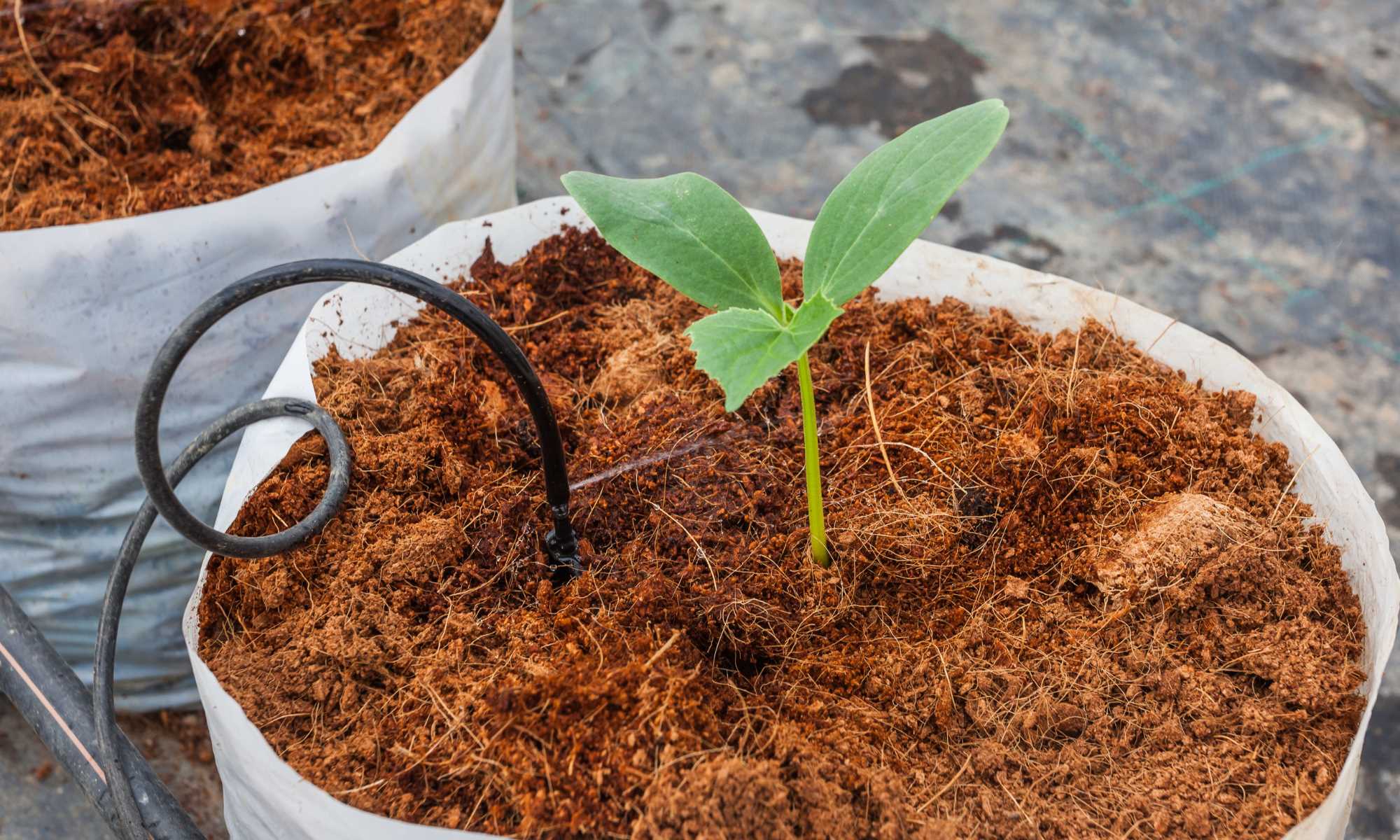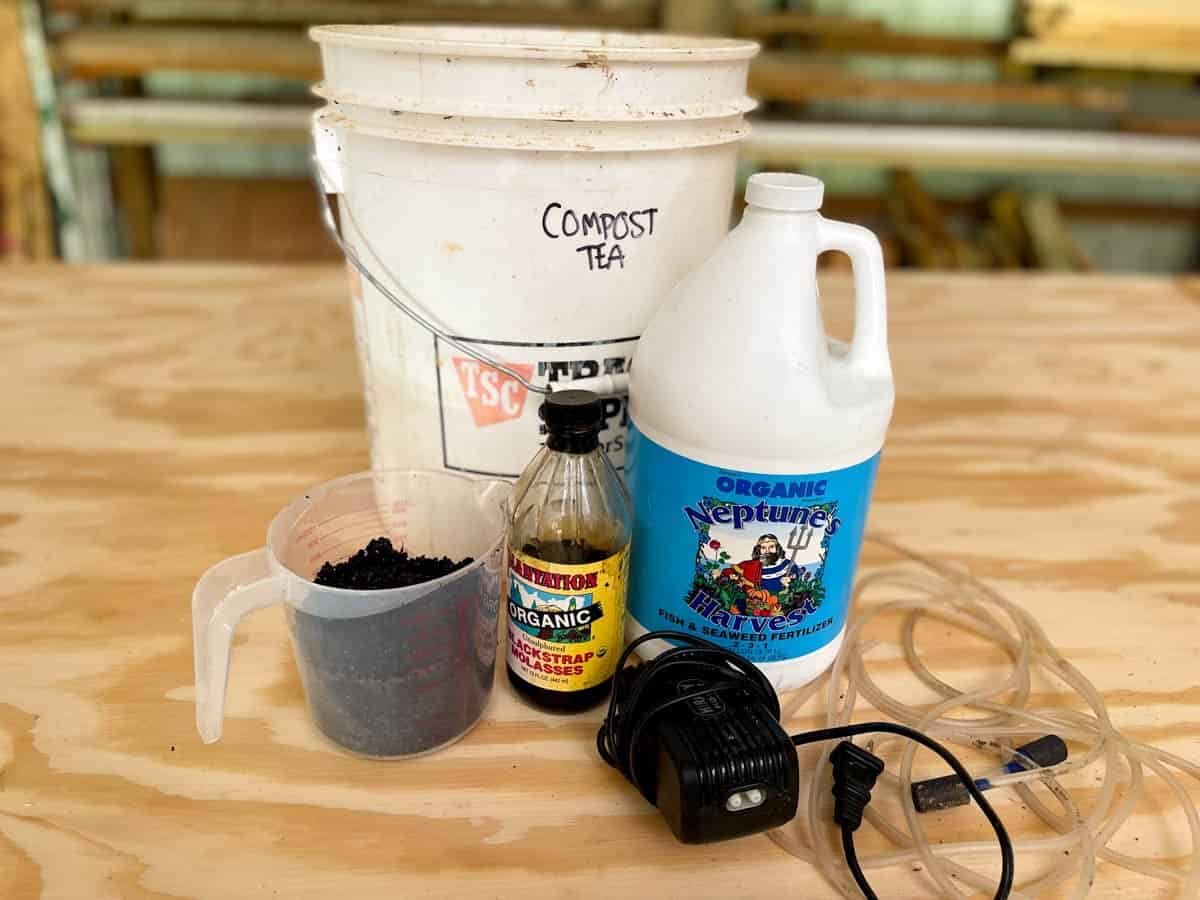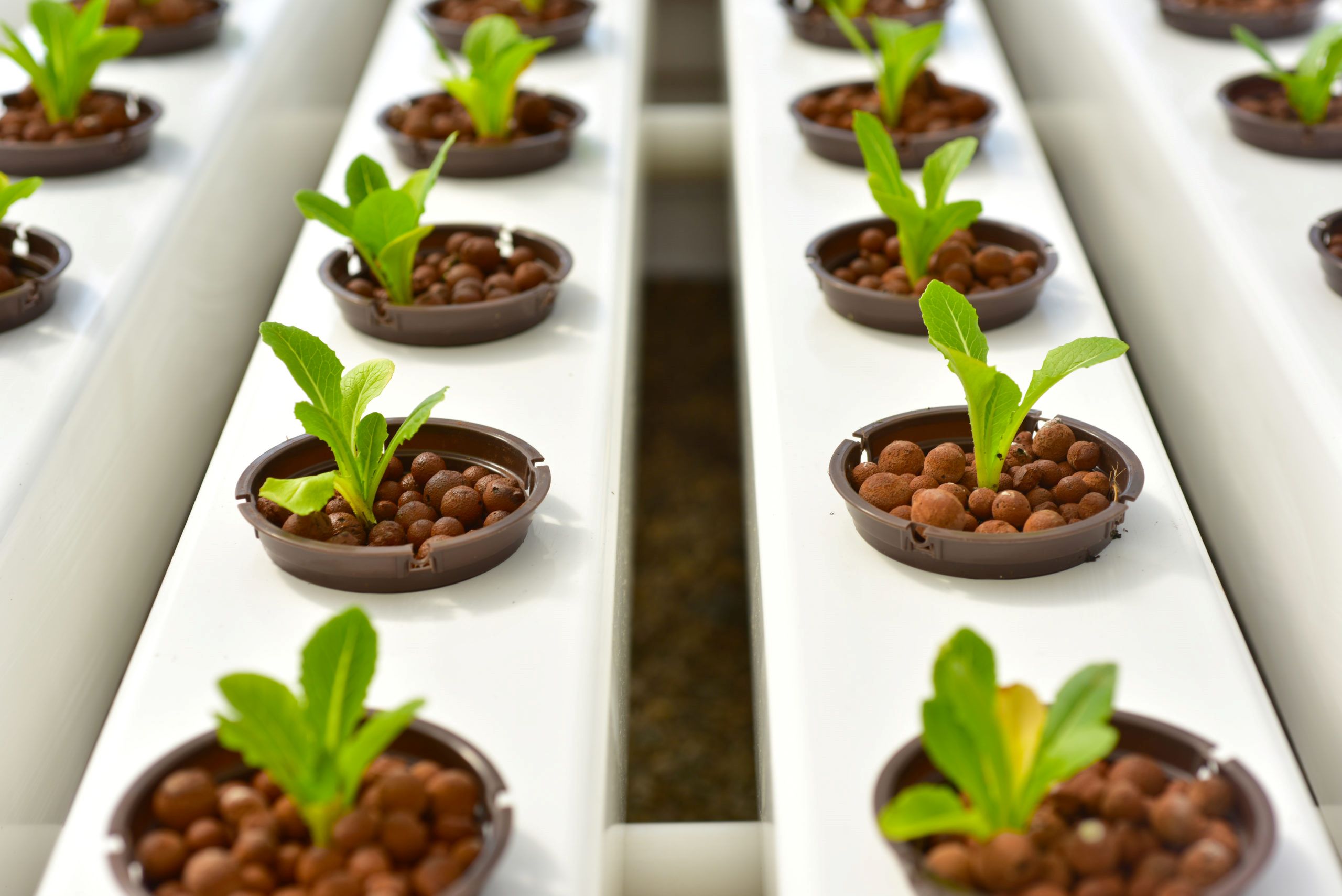Home>Gardening Tips and Tricks>Eco-Friendly Gardening>How Much Epsom Salt To Use Per Gallon In Hydroponics


Eco-Friendly Gardening
How Much Epsom Salt To Use Per Gallon In Hydroponics
Modified: January 22, 2024
Discover the eco-friendly way to garden with hydroponics! Learn how much Epsom salt to use per gallon and optimize your plant growth.
(Many of the links in this article redirect to a specific reviewed product. Your purchase of these products through affiliate links helps to generate commission for Chicagolandgardening.com, at no extra cost. Learn more)
Table of Contents
Introduction
Welcome to the exciting world of hydroponics, where you can grow beautiful and bountiful plants without the need for soil. Hydroponic gardening has gained popularity in recent years due to its numerous benefits, including increased plant growth, water efficiency, and space optimization. But to achieve optimal results, it’s important to provide your plants with the right nutrients they need to thrive. One such nutrient that can greatly benefit your hydroponic garden is Epsom salt.
Epsom salt, also known as magnesium sulfate, is a versatile compound with a wide range of applications, including in the realm of gardening. It consists of magnesium, sulfur, and oxygen, all of which are essential elements for plant growth. When used in hydroponics, Epsom salt provides plants with an additional source of magnesium, which is a vital nutrient for chlorophyll production and overall plant health.
So, you may be wondering, what are the benefits of using Epsom salt in hydroponics? How much Epsom salt should be used? And what are the potential risks or precautions to be aware of? In this article, we will answer these questions and provide you with a comprehensive guide to incorporating Epsom salt into your hydroponic gardening routine.
Whether you’re a seasoned hydroponic gardener or just starting out, understanding the role of Epsom salt and how to use it effectively can help you achieve stunning results in your garden. So, let’s dive in and explore the wonders of Epsom salt in hydroponics!
What is Epsom Salt?
Epsom salt, also known as magnesium sulfate, is a mineral compound that was first discovered in the natural springs of Epsom, England. It has been used for centuries in various fields, including medicine, beauty, and agriculture. Epsom salt is composed of magnesium, sulfur, and oxygen, all of which play crucial roles in plant growth and development.
Magnesium is an essential nutrient for plants and is involved in numerous biochemical processes. It is a crucial component of chlorophyll, the pigment responsible for photosynthesis. By providing plants with adequate magnesium, you can enhance their ability to convert light energy into carbohydrates, fueling their growth and productivity.
Sulfur, another essential nutrient found in Epsom salt, is important for the synthesis of proteins and enzymes. It also contributes to the development of plant tissues and helps improve their resistance to diseases and pests. Additionally, sulfur aids in the efficient uptake and utilization of other nutrients, resulting in better overall plant health.
The combination of magnesium and sulfur in Epsom salt makes it a valuable supplement for hydroponic gardening. In a hydroponic system, plants rely on a nutrient solution instead of soil to obtain their necessary elements. While most commercially available hydroponic nutrient solutions contain essential macronutrients and micronutrients, they may not always provide sufficient amounts of magnesium. This is where Epsom salt comes into play.
By incorporating Epsom salt into your hydroponic nutrient solution, you can ensure that your plants receive an adequate supply of magnesium and sulfur. This can lead to improved plant growth, vibrant foliage, increased flower and fruit production, and overall healthier plants.
It is worth mentioning that Epsom salt is not a miracle cure for all plant-related issues. It is best used as a supplement to a well-balanced nutrient solution. Furthermore, the use of Epsom salt should be based on the specific needs of each plant species and should be integrated into a comprehensive hydroponic fertilizer program.
Now that we have a better understanding of what Epsom salt is and its vital role in hydroponics, let’s explore the numerous benefits it offers to your hydroponic garden in the next section.
The Benefits of Epsom Salt in Hydroponics
Epsom salt offers a multitude of benefits when incorporated into your hydroponic gardening routine. Let’s take a closer look at some of the key advantages:
1. Magnesium Source: Epsom salt is an excellent source of magnesium, a vital nutrient for plant growth. Magnesium plays a crucial role in chlorophyll production, enhancing photosynthesis and promoting vibrant foliage. By providing your hydroponic plants with an adequate supply of magnesium through Epsom salt, you can ensure they have the necessary building blocks for robust growth and optimal nutrient absorption.
2. Improved Nutrient Uptake: Magnesium in Epsom salt can enhance nutrient uptake in hydroponic systems. It aids in the absorption and transport of other essential nutrients, such as nitrogen, phosphorus, and potassium. This improved nutrient uptake can result in healthier plants with increased resistance to environmental stresses, diseases, and pests.
3. Prevents Magnesium Deficiency: Magnesium deficiency is a common issue in hydroponic systems, leading to yellowing leaves (chlorosis) and reduced plant productivity. By supplementing your hydroponic nutrient solution with Epsom salt, you can prevent or alleviate magnesium deficiency, ensuring your plants continue to thrive.
4. Enhances Flowering and Fruit Production: Epsom salt has been shown to promote flowering and fruiting in various plants. Magnesium is instrumental in the formation of plant hormones that regulate flowering processes. By ensuring sufficient magnesium levels through Epsom salt, you can encourage your hydroponic plants to produce more abundant and higher-quality blooms, as well as an increased yield of fruits.
5. Promotes Overall Plant Health: The presence of magnesium and sulfur in Epsom salt contributes to the overall health and vitality of your hydroponic plants. Sulfur aids in the synthesis of proteins and enzymes, enhancing plant metabolism and growth. Together, magnesium and sulfur help strengthen cell walls, improve nutrient absorption, and stimulate enzyme activity. This results in healthier plants with increased vigor and resilience.
It is important to note that the benefits of Epsom salt vary depending on the specific plant species and the composition of your hydroponic nutrient solution. It is recommended to conduct thorough research and experiment with different Epsom salt concentrations to find the optimal balance for your plants’ needs.
Now that we have explored the benefits of Epsom salt in hydroponics, let’s delve into the factors you should consider before using Epsom salt in your hydroponic system.
Factors to Consider Before Using Epsom Salt
Before incorporating Epsom salt into your hydroponic system, it is essential to consider a few factors to ensure its effectiveness and avoid potential issues. Take the following aspects into account:
1. plant requirements: Different plant species have varying nutrient requirements, including their need for magnesium. Research the specific nutritional needs of your hydroponic plants and determine if they can benefit from the addition of Epsom salt. Some plants may require higher levels of magnesium, while others may not need it at all.
2. Nutrient Solution Analysis: It is important to analyze your hydroponic nutrient solution to determine its magnesium levels before adding Epsom salt. Conduct regular water and nutrient solution testing to ensure the appropriate nutrient balance. This will help you avoid over-supplementing with magnesium and other nutrients.
3. Magnesium Deficiency Symptoms: Learn to identify the symptoms of magnesium deficiency in plants, such as yellowing leaves (chlorosis) with green veins. Monitor your plants closely for any signs of magnesium deficiency, as this will help you determine if adding Epsom salt is necessary.
4. pH and EC Levels: Epsom salt can affect the pH and electrical conductivity (EC) levels of your nutrient solution. Monitor and adjust these parameters accordingly to maintain an optimal growing environment for your plants.
5. Application Method: Consider the best way to apply Epsom salt to your hydroponic system. You can dissolve it directly in the nutrient solution or apply it as a foliar spray. Each method has its advantages and considerations, so choose the one that suits your plants and growing setup.
6. Recommended Dosage: Follow the recommended dosage guidelines for Epsom salt application. Too little may not provide the desired benefits, while excessive amounts can lead to nutrient imbalances or toxicity. Always start with a lower dosage and gradually increase it as needed, based on the response of your plants.
7. Water Quality: The quality of your water source can impact the effectiveness of Epsom salt. Ensure that your water source is clean, free from contaminants, and of suitable pH and mineral composition for hydroponic gardening.
By taking these factors into consideration, you can make informed decisions regarding the use of Epsom salt in your hydroponic garden. The next section will provide you with step-by-step guidance on how to calculate the appropriate amount of Epsom salt for your hydroponic system.
How Much Epsom Salt to Use in Hydroponics
The amount of Epsom salt to use in your hydroponic system will depend on various factors, including the plant species, growth stage, and nutrient solution composition. It is essential to calculate the appropriate dosage to avoid nutrient imbalances or deficiencies. Here is a step-by-step guide to help you determine the right amount of Epsom salt to use:
Step 1: Research your plant’s magnesium requirements: Different plants have diverse nutritional needs. Some may require higher levels of magnesium, while others may have lower demands. Check trusted sources or consult gardening experts to determine the specific magnesium requirements for your hydroponic plants.
Step 2: Test your nutrient solution: Measure the magnesium levels in your nutrient solution before adding Epsom salt. This will help you determine if there is already sufficient magnesium in the solution or if supplementation is necessary. You can use testing kits or send samples to be analyzed by a professional laboratory.
Step 3: Calculate the Epsom salt amount: Once you know your plant’s magnesium requirements and the current magnesium levels in your nutrient solution, you can calculate the necessary amount of Epsom salt to add. Keep in mind that the general recommendation is to use Epsom salt at a concentration of 1-2 grams per liter of water in the nutrient solution.
Step 4: Gradually introduce Epsom salt: It is always best to start with a lower dosage and gradually increase it if needed. Begin by adding a small amount of Epsom salt to your nutrient solution, mix well, and monitor the response of your plants. If you observe improvements, continue with the same dosage. If necessary, increase the amount slightly and monitor again.
Step 5: Assess plant health and growth: Regularly assess the health and growth of your hydroponic plants. Look for signs of magnesium deficiency, such as yellowing leaves, and adjust the Epsom salt dosage accordingly. Remember that maintaining a proper balance of nutrients is crucial for optimal plant growth and productivity.
Step 6: Record and adjust: Keep a record of the Epsom salt dosage and the performance of your plants. This record will help you track the effectiveness of your Epsom salt application over time. Adjust the dosage as necessary based on the plant’s needs and any changes in the nutrient solution composition.
Remember that the dosage of Epsom salt may vary depending on the specific plant, growth stage, and nutrient solution composition. It is always advisable to research specific guidelines for your plants or consult with hydroponic experts for tailored recommendations.
Now that you know how to calculate the appropriate amount of Epsom salt for your hydroponic system, let’s move on to the next section, where we will explore some tips for applying Epsom salt effectively.
Step-by-Step Guide to Calculating Epsom Salt Amounts
Calculating the right amount of Epsom salt for your hydroponic system is essential to provide your plants with the appropriate magnesium supplementation. Follow this step-by-step guide to accurately determine the Epsom salt amount:
Step 1: Determine the desired concentration: Research the recommended concentration of Epsom salt for your specific plant species or consult hydroponic experts for guidance. The general range is 1-2 grams of Epsom salt per liter of water in the nutrient solution.
Step 2: Measure the volume of your nutrient solution: Calculate the total volume of your nutrient solution, taking into account the size of your reservoir or system. This will help you determine the overall amount of Epsom salt required.
Step 3: Calculate the Epsom salt weight: Multiply the desired concentration (in grams) by the total volume of your nutrient solution (in liters). This will give you the total weight of Epsom salt needed for your hydroponic system.
Step 4: Convert the weight to teaspoons: If you prefer using teaspoons as a measurement, you can convert the weight of Epsom salt to teaspoons. Keep in mind that the weight of Epsom salt may vary based on factors such as granule size and density. As a general guide, 1 teaspoon of Epsom salt weighs approximately 5 grams.
Step 5: Gradually add Epsom salt to the nutrient solution: Start by adding a small portion of the calculated Epsom salt to your nutrient solution. Mix well until it dissolves completely. Monitor the plant’s response to the Epsom salt addition and make adjustments if necessary.
Step 6: Monitor and adjust accordingly: Regularly observe the plant’s health and growth to ensure they are receiving the appropriate magnesium supplementation. Look for signs of magnesium deficiency or excess, such as yellowing or browning of leaves, and adjust the Epsom salt dosage accordingly.
Step 7: Keep records and track performance: Maintain a record of the Epsom salt dosage and the plant’s response. This will help you evaluate the effectiveness of your Epsom salt application over time. Adjust the dosage as necessary based on plant needs and changes in the nutrient solution composition.
Remember that these steps provide a general guideline for calculating the Epsom salt amount. Specific plant requirements and nutrient solution characteristics may influence the dosage required. It is always a good idea to conduct thorough research or seek advice from hydroponic experts to determine the optimal Epsom salt amount for your particular hydroponic system.
Now that you understand the step-by-step process of calculating Epsom salt amounts, we will move on to the next section, where we will provide some valuable tips for effectively applying Epsom salt in your hydroponic garden.
Tips for Applying Epsom Salt in Hydroponics
When applying Epsom salt in your hydroponic system, there are some valuable tips to keep in mind to ensure its effectiveness and avoid potential issues. Consider the following tips for applying Epsom salt in hydroponics:
1. Dissolve properly: Epsom salt should be fully dissolved in your nutrient solution before adding it to your hydroponic system. Stir or mix vigorously to ensure complete dissolution. This will help prevent clogs in your system and ensure even distribution of nutrients.
2. Avoid direct contact with plant tissues: When applying Epsom salt as a foliar spray, avoid spraying it directly onto plant tissues, especially during hot and sunny periods. This can cause leaf burning or damage. Instead, spray the solution onto the surrounding areas or underside of the leaves.
3. Time application appropriately: For optimal absorption, apply Epsom salt during the plant’s active growth phase. This is usually in the morning or early evening when the stomata (tiny openings in the leaves) are open and actively taking in nutrients. Avoid application during extreme temperatures or under high light intensity.
4. Monitor plant response: Keep a close eye on your plants after applying Epsom salt. Observe any changes in growth, color, or overall health. Healthy plants will generally show improved vigor, brighter foliage, and enhanced flowering or fruiting. However, if you notice any adverse effects, adjust the dosage or frequency of Epsom salt application accordingly.
5. Regularly test nutrient solution: Monitor the nutrient solution in your hydroponic system on a regular basis. Test its pH level, electrical conductivity (EC), and magnesium levels to ensure a balanced and optimal growing environment. Adjust the nutrient solution and Epsom salt dosage if necessary to maintain the desired parameters.
6. Incorporate Epsom salt into your fertilizer regime: Epsom salt is not a standalone nutrient source but rather a supplement to your overall hydroponic fertilizer regime. Make sure to maintain a well-balanced nutrient solution that provides all the essential macronutrients and micronutrients in addition to the magnesium supplied by Epsom salt.
7. Research plant-specific requirements: Different plants have unique nutritional needs, including their requirement for magnesium. Research the specific needs of your hydroponic plants to determine the appropriate Epsom salt dosage and application method. Some plant varieties may benefit from more frequent applications, while others may require less frequent supplementation.
By following these tips, you can ensure the proper application of Epsom salt in your hydroponic system and harness its benefits effectively. Remember that every hydroponic setup and plant species are different, so it is important to monitor and adjust accordingly to meet your specific plant’s needs.
Now that you are armed with useful tips for applying Epsom salt in hydroponics, let’s move on to the next section, where we will explore potential risks and precautions you should be aware of.
Potential Risks and Precautions
While Epsom salt can be beneficial for hydroponic gardening, it is important to be aware of potential risks and take necessary precautions. Consider the following factors to ensure the safe and effective use of Epsom salt in your hydroponic system:
1. Nutrient Imbalances: Overuse of Epsom salt can lead to nutrient imbalances in your hydroponic system. Excessive magnesium levels can interfere with the absorption of other essential nutrients, potentially causing deficiencies. Regularly test the nutrient solution and adjust the Epsom salt dosage accordingly to maintain a balanced nutrient profile.
2. Water Quality: The quality of your water source can affect the efficacy of Epsom salt. Ensure that your water is clean, free from contaminants, and suitable for hydroponic gardening. Water with high levels of certain minerals, such as calcium, may reduce the effectiveness of Epsom salt or result in nutrient imbalances.
3. Plant Sensitivity: Some plant species may be more sensitive to Epsom salt than others. Monitor your plants closely after application and observe any signs of adverse effects, such as leaf burn or stunted growth. If any issues arise, reduce the Epsom salt dosage or discontinue use if necessary.
4. pH and EC Fluctuations: Epsom salt can impact the pH and electrical conductivity (EC) levels of your nutrient solution. Regularly monitor these parameters to ensure they remain within the appropriate range for your plants. Adjust pH and EC levels as needed to maintain an optimal growing environment.
5. Contaminant-free Epsom salt: Ensure that the Epsom salt you use is free from contaminants or additives. Choose high-quality sources to prevent introducing unwanted substances into your hydroponic system. Read product labels or opt for reputable brands to ensure purity.
6. Consultation and Research: If you are unsure about the use of Epsom salt in your specific hydroponic setup, it is best to consult experienced hydroponic gardeners or experts. They can provide personalized advice based on your plant species, nutrient solution composition, and growing conditions.
7. Follow Application Guidelines: It is crucial to follow the recommended guidelines for applying Epsom salt in your hydroponic system. Avoid over-dosage or applying it too frequently, as this can lead to nutrient imbalances or toxicity. Start with smaller quantities and gradually increase if necessary, observing the plant’s response at each stage.
By being mindful of these risks and taking appropriate precautions, you can minimize potential issues and maximize the benefits of Epsom salt in your hydroponic garden.
Now that we have explored the potential risks and precautions associated with using Epsom salt in hydroponics, let’s conclude this article by summarizing the key points discussed.
Conclusion
Epsom salt can be a valuable addition to your hydroponic gardening routine, providing essential magnesium and sulfur to promote healthy and productive plants. By incorporating Epsom salt into your nutrient solution, you can enhance nutrient uptake, improve plant health, stimulate flowering and fruiting, and achieve overall better results in your hydroponic garden.
When using Epsom salt in hydroponics, it’s important to consider factors such as plant requirements, nutrient solution composition, and application methods. Calculating the appropriate amount of Epsom salt and monitoring its effects on your plants are crucial steps to ensure optimal plant growth and to avoid nutrient imbalances or deficiencies.
While Epsom salt offers numerous benefits, it’s important to be aware of potential risks and take necessary precautions. Regularly testing your nutrient solution, monitoring plant health, and maintaining a balanced nutrient profile are key to successfully incorporating Epsom salt into your hydroponic system.
Remember to conduct thorough research on specific plant requirements and consult experts in hydroponic gardening to tailor your approach to your unique situation. By staying informed and taking the appropriate measures, you can harness the benefits of Epsom salt and witness the thriving growth of your hydroponic plants.
So, go ahead and give Epsom salt a try in your hydroponic garden. Watch as your plants flourish, producing vibrant foliage, beautiful flowers, and a bountiful harvest.
Happy gardening!
